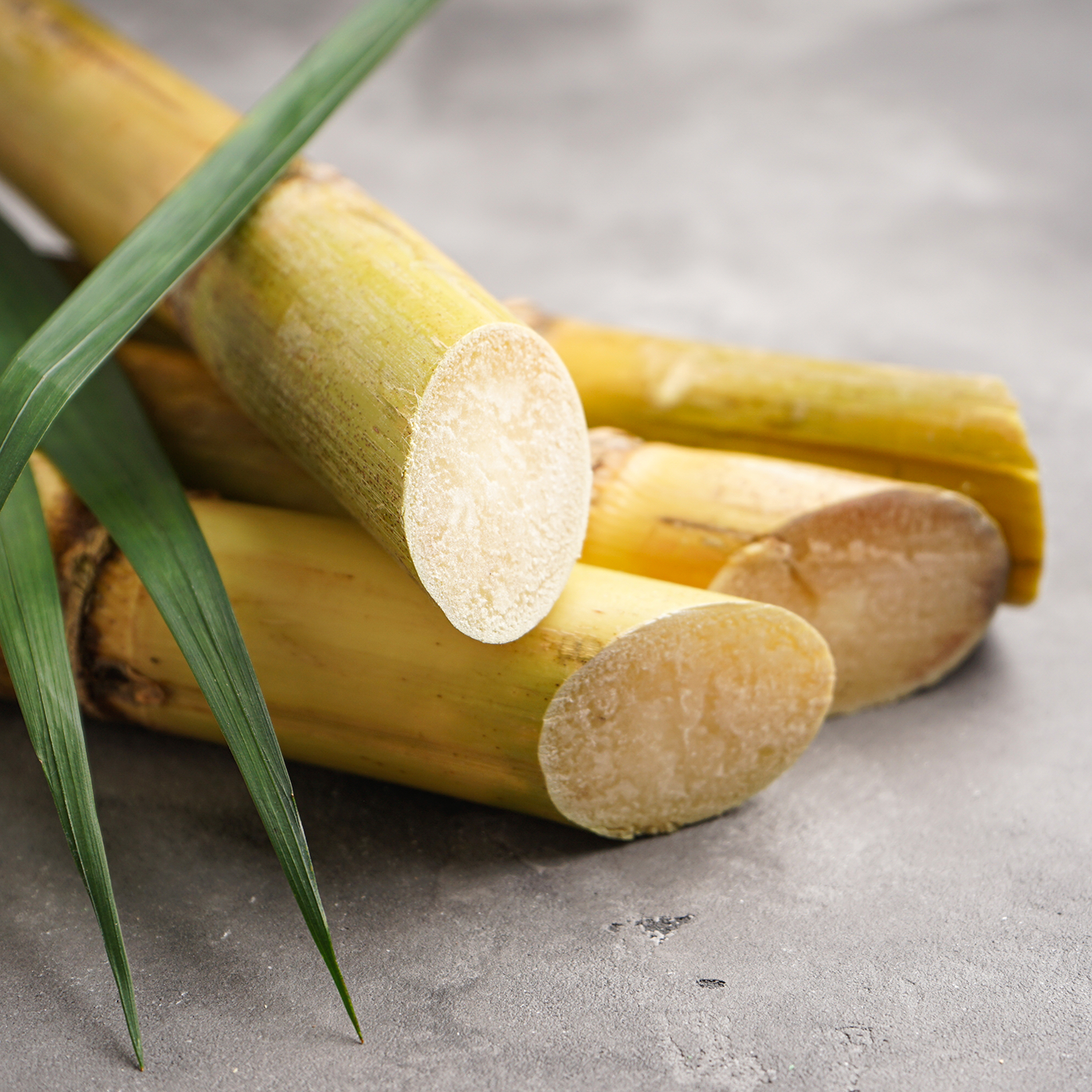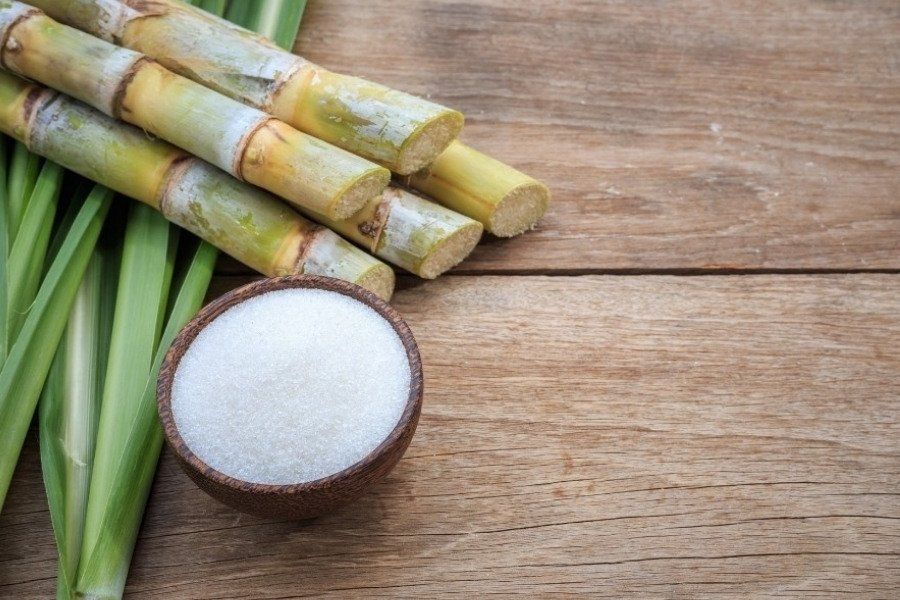Exploring the Full Line of Refine Chemicals: What Are Sugar Canes Used For in Production?
Sugar walking sticks play a critical duty in numerous producing processes, working as a versatile resources. Their high sucrose web content makes them crucial in the food industry, while developments in biofuels and naturally degradable plastics highlight their potential past standard uses. In addition, sugar walking stick essences are acquiring acknowledgment in drugs and nutraceuticals for their health and wellness advantages. The complex applications of sugar canes raise appealing questions about their future in industrial industries. What chances exist in advance?

The Journey of Sugar Cane: From Area to Factory
As the sun increases over huge areas, the trip of sugar walking cane begins, noted by precise cultivation and collecting processes. Farmers pick suitable varieties, making sure robust development in suitable climates. Routine irrigation and nutrient monitoring are crucial, advertising healthy stalks rich in sucrose. When mature, the cane is gathered, usually making use of mechanical cutters that effectively collect the stalks.Once gathered, the sugar walking stick is transported to processing facilities where it undergoes milling and cleaning to extract juice. This juice is after that cleared up, getting rid of pollutants with sedimentation and filtering. The clear liquid is concentrated by evaporation, and ultimately crystallized to produce raw sugar.Throughout this trip, quality assurance is paramount, guaranteeing that the last item meets sector standards. The improvement of sugar walking stick into raw sugar highlights an intricate interplay of agriculture and production, establishing the phase for its varied applications in different markets.
Biofuels: Harnessing Energy From Sugar Walking Cane
A significant part of the globe's biofuel production is derived from sugar walking cane, which works as an eco-friendly power resource. This flexible plant is mainly refined to draw out sucrose, which can be fermented to generate ethanol. Ethanol stemmed from sugar cane is not only a clean-burning fuel alternative however additionally adds to lowering greenhouse gas exhausts contrasted to traditional nonrenewable fuel sources. In countries like Brazil, sugar walking stick biofuel has actually become a substantial component of the energy matrix, lowering and powering lorries dependence on imported oil. The cultivation of sugar walking cane for biofuels likewise sustains country economic climates, supplying tasks in farming and handling. Additionally, the byproducts of sugar cane processing, such as bagasse, are utilized in energy generation, further boosting the sustainability of the production cycle. In general, sugar walking cane biofuels stand for an encouraging avenue for achieving power freedom while promoting environmental stewardship.
Eco-friendly Plastics: The Sustainable Remedy
Suppose the service to the global plastic crisis hinges on eco-friendly choices? Eco-friendly plastics, acquired from renewable energies such as sugar walking sticks, present a cutting-edge approach to lowering plastic waste. Unlike standard plastics, which can take centuries to disintegrate, these environment-friendly materials damage down naturally, reducing environmental impact.The production of naturally degradable plastics entails using sugars from sugar walking sticks to produce polylactic acid (PLA) and other biopolymers. These products maintain similar capability to conventional plastics, making them ideal for different applications, including product packaging, utensils, and agricultural films.As consumers and sectors change toward sustainability, eco-friendly plastics use a compelling option. They not only minimize dependence on fossil fuels but additionally sustain a circular economy by going back to the earth without leaving hazardous deposits. The raising demand for such materials signifies a significant step towards dealing with journalism requirement for even more sustainable manufacturing solutions despite environmental challenges.
Sugar Walking Stick Essences in Nutraceuticals and drugs

The Future of Sugar Cane in Industrial Applications
As markets continue to seek renewable and lasting sources, sugar walking stick is positioned to play a critical function in different commercial applications beyond its traditional use in sugar manufacturing. Its biomass offers an eco-friendly source for biofuels, lowering dependence on nonrenewable fuel sources and contributing to reduced carbon discharges. Additionally, sugar walking cane's spin-offs, such as bagasse and molasses, are being discovered for their potential in bioplastics and biodegradable products, resolving the growing demand for eco pleasant product packaging solutions.Research is likewise underway to boost the efficiency of sugar walking stick by-products in numerous markets, consisting of fabrics, cosmetics, and construction. By using the special residential or commercial properties of sugar walking stick, suppliers can produce cutting-edge items that straighten with consumer preferences for sustainability. As innovation breakthroughs, the convenience of sugar cane will likely increase, solidifying its position as a principal in the change toward an extra lasting industrial landscape.

Regularly Asked Inquiries
What Is the Process of Refining Sugar Walking Cane Into Sugar?
The procedure of refining sugar walking cane right into sugar entails harvesting, crushing to draw out juice, clearing up the juice, evaporating water, crystallizing sugar, and lastly drying out and packaging the improved item for circulation and intake. (What Are Sugar Canes Used For)
Just How Does Sugar Walking Cane Influence Local Economies?
Sugar walking cane significantly influences local economies by producing tasks, boosting agricultural manufacturing, and creating earnings through exports. Its cultivation supports little farmers and neighborhood services, promoting community growth and boosting general financial security in sugar-producing areas.
Exist Any Kind Of Environmental Interest In Sugar Walking Cane Farming?
Environmental problems related to sugar cane farming consist of logging, dirt deterioration, water usage, and chemical runoff (What Are Sugar Canes Used For). These concerns impact local communities and add to climate change, prompting require even more lasting agricultural techniques within the sector
What Are the Nutritional Conveniences of Sugar Walking Stick?
The dietary benefits of sugar walking cane include its rich material of vitamins, minerals, and antioxidants. It offers natural power, sustains hydration, and may aid food digestion, contributing favorably to overall wellness when consumed in small amounts.
Just How Does Sugar Cane Compare to Various Other Crops in Sustainability?
Sugar cane shows higher sustainability contrasted to many plants because of its efficient usage of land and water sources, capability to generate biofuels, and potential for carbon sequestration, adding positively to environmental health and wellness and farming practices. When fully grown, the walking cane is harvested, typically using mechanical have a peek at this website cutters that efficiently gather the stalks.Once accumulated, the sugar walking stick is carried to refining facilities where it undergoes washing and milling to draw out juice. Unlike traditional plastics, which can take centuries to break down, these eco-friendly products damage down normally, minimizing ecological impact.The production of biodegradable plastics includes making use of sugars from sugar walking sticks to develop polylactic acid (PLA) and other biopolymers. Usually identified for their role in sugar production, sugar walking stick removes are increasingly finding applications in the nutraceutical and pharmaceutical sectors. As industries continue to seek sustainable and sustainable sources, sugar walking stick is positioned to play a pivotal function in numerous industrial applications beyond its conventional usage in sugar production. In addition, sugar walking stick's byproducts, such as bagasse and molasses, are try here being explored for their possibility in bioplastics and naturally degradable materials, resolving the growing demand for ecologically pleasant product packaging solutions.Research is additionally underway to boost the performance of sugar walking cane derivatives in various markets, including fabrics, cosmetics, and building.